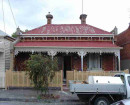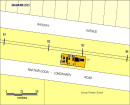HAWTHORN BRIDGE
BRIDGE ROAD RICHMOND AND BURWOOD ROAD HAWTHORN, BOROONDARA CITY, YARRA CITY
-
Add to tour
You must log in to do that.
-
Share
-
Shortlist place
You must log in to do that.
- Download report




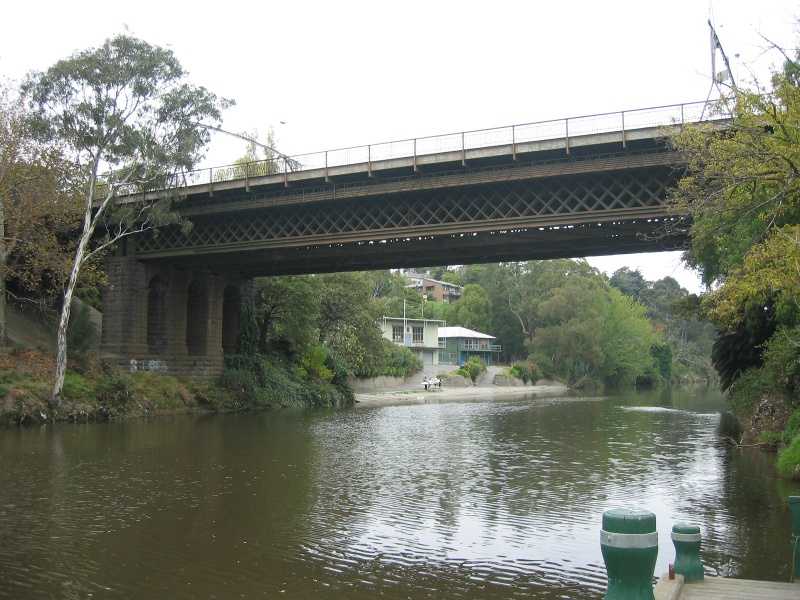
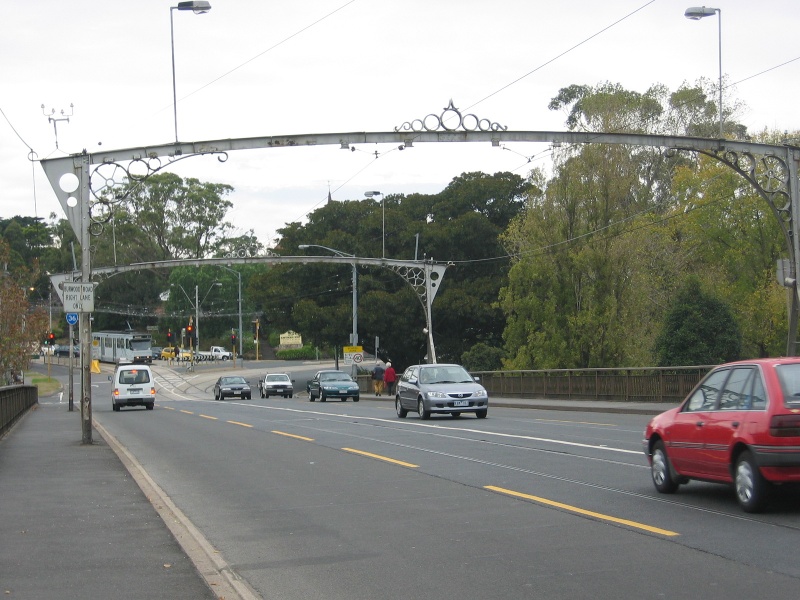
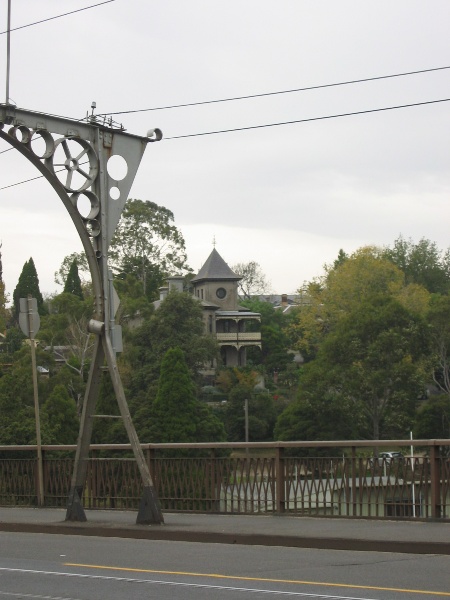
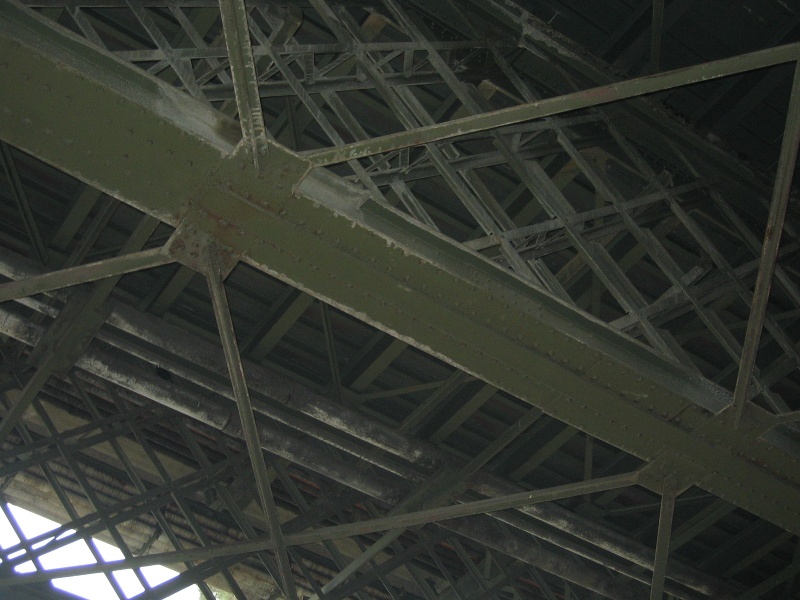
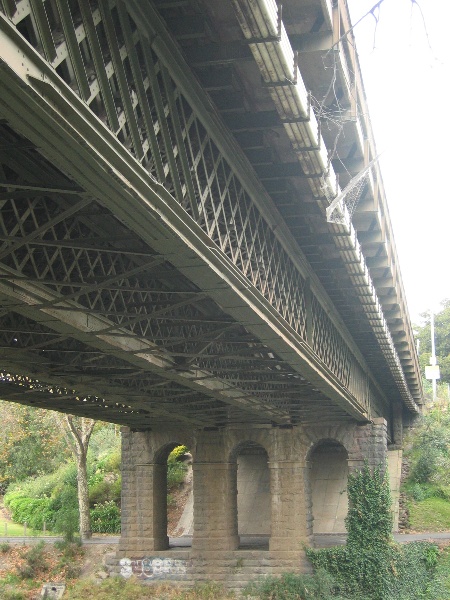
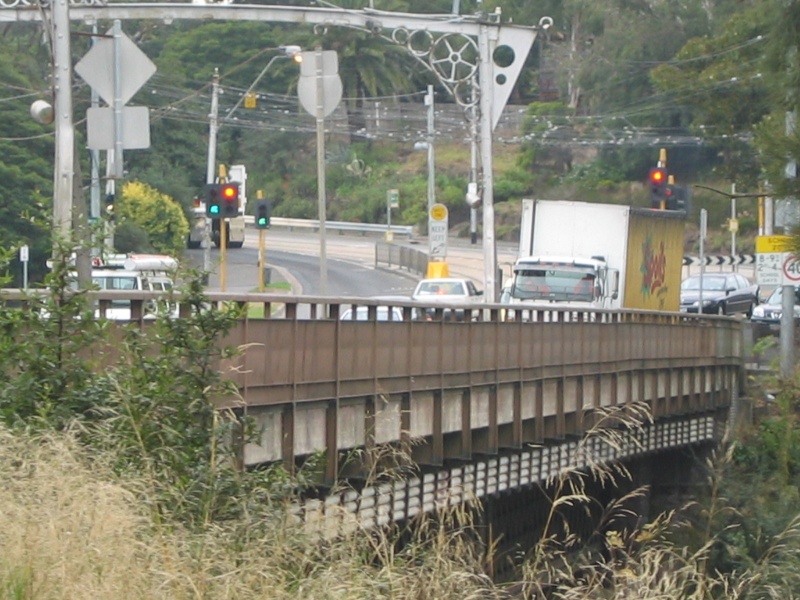
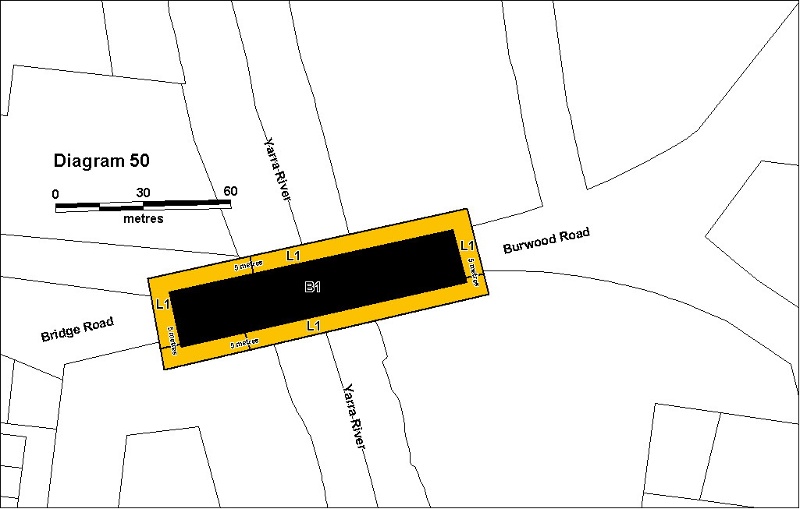
Statement of Significance
What is significant?
The Hawthorn Bridge is a large bluestone and wrought-iron bridge, opened in 1861 to connect Richmond and Hawthorn across the Yarra River via Bridge Road. The metal bridge replaced an earlier timber bridge which in turn replaced the use of a punt that operated at the crossing from the 1830s. Hawthorn Bridge has a substantial riveted, wrought-iron, lattice-truss superstructure with triple-arched perforated bluestone piers and abutments. It is 98m long, with a central span of 45.7 m and roadway 14.3 metres wide and, along with the slightly smaller Hunter River Bridge at Muswellbrook, NSW, is the oldest surviving metal truss bridge in Australia. Like most pre-1880 metal road bridges in Victoria, Hawthorn Bridge is composed of imported wrought iron. Wrought iron intended for the Hawthorn Bridge was lost when the ship ‘Herald of the Morning’ caught fire and was scuttled in Hobson’s Bay requiring further iron to be ordered from Britain. Wrought iron from the ‘Herald of the Morning’ was later salvaged and used in the Mia Mia Bridge at Redesdale (H1419).
In 1890 the double-arched bluestone piers (completed in 1858) were widened to triple arches and a further lattice truss girder added to accommodate horse-drawn trams. In 1916 the Hawthorn Tramways Trust erected three decorative steel gantries over the roadway to carry overhead wires for the newly electrified trams connecting Hawthorn and Camberwell to the city. The gantries along with those on the Victoria Street Bridge, which they closely resemble, were manufactured by H Wallace and Son Engineers. From 1929-1931 the bridge underwent substantial repairs involving the first use of on-site arc welding for bridge repair. With the exception of short periods during which it was closed for repair, Hawthorn Bridge has been in continuous usage since 1861 and, apart from the reinforced concrete roadway the bridge, is substantially intact to its 1890s form.
How is it significant?
The Hawthorn Bridge is of historic, architectural, scientific (technical) and aesthetic significance to the State of Victoria.
Why is it significant?
The Hawthorn Bridge is of historical significance as the earliest surviving major metal bridge in Victoria, the oldest surviving truss bridge in Australia and the oldest surviving bridge spanning the Yarra River. It was only the third non-timber bridge to be erected over the Yarra (following the first Princes Bridge, and the Chapel-Church Street Bridge) and formed an important early link to Melbourne’s eastern suburbs and beyond to the rich agricultural land of the Yarra Valley. Its construction cemented the eastern suburbs, and especially Hawthorn, Kew and Camberwell as the preferred abode of Melbourne’s middle class in the late 19th century, and so influenced the social and geographic growth of Melbourne.
Hawthorn Bridge is of architectural and scientific (technological) significance as the outstanding metal road bridge in Victoria, a rare example of mid-nineteenth century British Colonial engineering. The bridge is significant for its association with the development of engineering design in Victoria, being the first metal truss or lattice girder bridge. The designer is unknown but the design was probably influenced by the Board of Land and Works Engineer in Chief, Thomas Higginbotham.The late 19th century was a period of experimentation in metal bridge building in part due to the use of wrought iron prior to developments in furnaces that made production of steel economically viable. As a consequence bridges all early lattice truss and girder bridges are unique in their construction. These include Glenmona Bridge (H1846) (1871), McMillan’s Bridge (H1847) (1889), Cressy Bridge (1880), and the fore mentioned Mia Mia Bridge (H1419) (1868).
Hawthorn Bridge is also of scientific (technological) significance as the test site, in 1930, for the pioneering of electric welding as a method for reinforcing bridges. The then recent developments in arc welding technology had made it portable and allowed its on-site use to repair the Hawthorn Bridge.
Hawthorn Bridge is of aesthetic significance for the unique architectural qualities of the finely executed monumental design, the tall, triple-arched perforated bluestone piers and stone abutments towering over the Yarra. Overhead, the decorative steel gantries reflect ornamental design of early 20th century street furniture, now relatively rare. The setting against steep banks with lush exotic and native vegetation contributes to the appreciation of the bridge as part of the Yarra river landscape.
-
-
HAWTHORN BRIDGE - Permit Exemptions
General Exemptions:General exemptions apply to all places and objects included in the Victorian Heritage Register (VHR). General exemptions have been designed to allow everyday activities, maintenance and changes to your property, which don’t harm its cultural heritage significance, to proceed without the need to obtain approvals under the Heritage Act 2017.Places of worship: In some circumstances, you can alter a place of worship to accommodate religious practices without a permit, but you must notify the Executive Director of Heritage Victoria before you start the works or activities at least 20 business days before the works or activities are to commence.Subdivision/consolidation: Permit exemptions exist for some subdivisions and consolidations. If the subdivision or consolidation is in accordance with a planning permit granted under Part 4 of the Planning and Environment Act 1987 and the application for the planning permit was referred to the Executive Director of Heritage Victoria as a determining referral authority, a permit is not required.Specific exemptions may also apply to your registered place or object. If applicable, these are listed below. Specific exemptions are tailored to the conservation and management needs of an individual registered place or object and set out works and activities that are exempt from the requirements of a permit. Specific exemptions prevail if they conflict with general exemptions. Find out more about heritage permit exemptions here.Specific Exemptions:General Conditions: 1. All exempted alterations are to be planned and carried out in a manner which prevents damage to the fabric of the registered place or object. General Conditions: 2. Should it become apparent during further inspection or the carrying out of works that original or previously hidden or inaccessible details of the place or object are revealed which relate to the significance of the place or object, then the exemption covering such works shall cease and the Executive Director shall be notified as soon as possible. Note: All archaeological places have the potential to contain significant sub-surface artefacts and other remains. In most cases it will be necessary to obtain approval from Heritage Victoria before the undertaking any works that have a significant sub-surface component. General Conditions: 3. If there is a conservation policy and plan approved by the Executive Director, all works shall be in accordance with it. Note: The existence of a Conservation Management Plan or a Heritage Action Plan endorsed by Heritage Victoria provides guidance for the management of the heritage values associated with the site. It may not be necessary to obtain a heritage permit for certain works specified in the management plan. General Conditions: 4. Nothing in this determination prevents the Executive Director from amending or rescinding all or any of the permit exemptions. General Conditions: 5. Nothing in this determination exempts owners or their agents from the responsibility to seek relevant planning or building permits from the responsible authorities where applicable. Regular Site Maintenance : The following site maintenance works are permit exempt under section 66 of the Heritage Act 1995, a) regular site maintenance provided the works do not involve the removal or destruction of any significant above-ground features or sub-surface archaeological artefacts or deposits; b) the maintenance of an item to retain its conditions or operation without the removal of or damage to the existing fabric or the introduction of new materials; c) cleaning including the removal of surface deposits, organic growths, or graffiti by the use of low pressure water and natural detergents and mild brushing and scrubbing; d) repairs, conservation and maintenance to plaques, memorials, roads and paths, fences and gates and drainage and irrigation. e) the replacement of existing services such as cabling, plumbing, wiring and fire services that uses existing routes, conduits or voids, and does not involve damage to or the removal of significant fabric. Note: Surface patina which has developed on the fabric may be an important part of the item’s significance and if so needs to be preserved during maintenance and cleaning. Note: Any new materials used for repair must not exacerbate the decay of existing fabric due to chemical incompatibility, obscure existing fabric or limit access to existing fabric for future maintenance. Repair must maximise protection and retention of fabric and include the conservation of existing details or elements. Public Safety and Security : The following public safety and security activities are permit exempt under section 66 of the Heritage Act 1995, a) public safety and security activities provided the works do not involve the removal or destruction of any significant above-ground structures or sub-surface archaeological artefacts or deposits; b) the erection of temporary security fencing, scaffolding, hoardings or surveillance systems to prevent unauthorised access or secure public safety which will not adversely affect significant fabric of the place including archaeological features; c) development including emergency stabilisation necessary to secure safety where a site feature has been irreparably damaged or destabilised and represents a safety risk to its users or the public. Note: Urgent or emergency site works are to be undertaken by an appropriately qualified specialist such as a structural engineer, or other heritage professional. Signage and Site Interpretation : The following Signage and Site Interpretation activities are permit exempt under section 66 of the Heritage Act 1995, a) signage and site interpretation activities provided the works do not involve the removal or destruction of any significant above-ground structures or sub-surface archaeological artefacts or deposits; b) the erection of non-illuminated signage for the purpose of ensuring public safety or to assist in the interpretation of the heritage significance of the place or object and which will not adversely affect significant fabric including landscape or archaeological features of the place or obstruct significant views of and from heritage values or items; c) signage and site interpretation products must be located and be of a suitable size so as not to obscure or damage significant fabric of the place; d) signage and site interpretation products must be able to be later removed without causing damage to the significant fabric of the place; Note: The development of signage and site interpretation products must be consistent in the use of format, text, logos, themes and other display materials. Note: Where possible, the signage and interpretation material should be consistent with other schemes developed on similar or associated sites. It may be necessary to consult with land managers and other stakeholders concerning existing schemes and strategies for signage and site interpretation.Roadworks: The following works to the road portion of the place is permit exempt: a)The resurfacing of the road and maintenance to the road surface; b) lane marking; c) erection of speed and traffic signs.The installation of traffic lights may be permit exempt if the Executive Director is satisfied that the heritage significance and the significant fabric of the place will not be adversely affected by such an installation. Any proposal to undertake such work should be submitted to the Executive Director for approval.
HAWTHORN BRIDGE - Permit Exemption Policy
It is the purpose of the permit exemptions to enable routine maintenance and repairs which do not damage the significant fabric of the place, or diminish its cultural significance. Few alterations could be made to the bridge without compromising appreciation of the original design. Hawthorn Bridge is significant for the method of its construction. Any proposed works that would replace or alter the fabric of the structure, or adversely affect any understanding of it should be avoided. A permit will be required for any substantial alterations.
-
-
-
-
-
FORMER INVERGOWRIE LODGE
 Victorian Heritage Register H0517
Victorian Heritage Register H0517 -
FORMER BRIDGE HOTEL
 Victorian Heritage Register H0449
Victorian Heritage Register H0449 -
INVERGOWRIE
 Victorian Heritage Register H0195
Victorian Heritage Register H0195
-
'CARINYA' LADSONS STORE
 Victorian Heritage Register H0568
Victorian Heritage Register H0568 -
1 Alexander Street
 Yarra City
Yarra City -
1 Botherambo Street
 Yarra City
Yarra City
-
-







